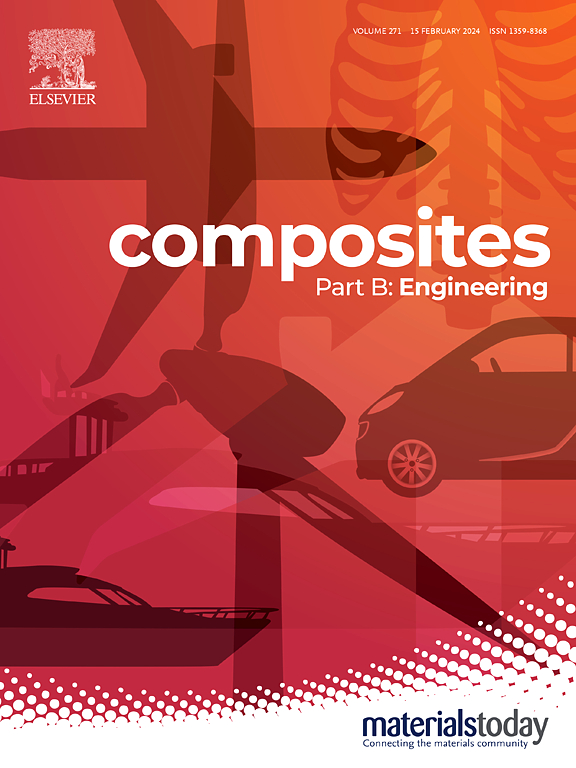Scalable and flexible radiative cooling composite metamaterial structure with thermally responsive emissivity tunability
IF 12.7
1区 材料科学
Q1 ENGINEERING, MULTIDISCIPLINARY
引用次数: 0
Abstract
An ideal thermally adaptive composite metamaterial structure (CMS) requires precise spectral control capabilities to achieve efficient heat emission within the atmospheric transparency window (8–14 μm), scalability, and durability to facilitate effective thermoregulation in response to the ambient temperature. Here, we propose a polyethylene (PE) based composite metamaterial structure (PE-CMS) constructed by randomly distributed vanadium dioxide (VO2) and indium tin oxide (ITO) particles within the PE matrix, forming a PE based composite metamaterial film (PE-CMF), which is deposited on the aluminium substrate. Utilizing the low infrared (IR) absorption property of PE, the phase transition property of VO2 and the high IR scattering properties of ITO, we have developed temperature induced PE-CMS. This design enhances the overall IR absorption through the scattering effect of metallic VO2 particles during the temperature-induced insulator-to-metal phase transition, together with the scattering of ITO particles. This enables the automatic switching of the thermal emittance from approximately 60 %–75 %, upon the metal-to-insulator transition temperature. This study provides a theoretical explanation of the mechanism by which metallic VO2 functions as an IR absorber by efficiently trapping infrared radiation, leading to an extended optical path length within the polymer matrix. Furthermore, it explores the selection of the most suitable polymer matrix for optimizing emissivity modulation in response to temperature variations. Numerical simulations, along with indoor and outdoor field tests, are utilize to explore the adaptive thermal emission mechanisms underlying the proposed PE-CMS. The structure can be a promising structure for utilizing as a dynamic in various applications for adaptive thermal regulation.
求助全文
约1分钟内获得全文
求助全文
来源期刊

Composites Part B: Engineering
工程技术-材料科学:复合
CiteScore
24.40
自引率
11.50%
发文量
784
审稿时长
21 days
期刊介绍:
Composites Part B: Engineering is a journal that publishes impactful research of high quality on composite materials. This research is supported by fundamental mechanics and materials science and engineering approaches. The targeted research can cover a wide range of length scales, ranging from nano to micro and meso, and even to the full product and structure level. The journal specifically focuses on engineering applications that involve high performance composites. These applications can range from low volume and high cost to high volume and low cost composite development.
The main goal of the journal is to provide a platform for the prompt publication of original and high quality research. The emphasis is on design, development, modeling, validation, and manufacturing of engineering details and concepts. The journal welcomes both basic research papers and proposals for review articles. Authors are encouraged to address challenges across various application areas. These areas include, but are not limited to, aerospace, automotive, and other surface transportation. The journal also covers energy-related applications, with a focus on renewable energy. Other application areas include infrastructure, off-shore and maritime projects, health care technology, and recreational products.
 求助内容:
求助内容: 应助结果提醒方式:
应助结果提醒方式:


